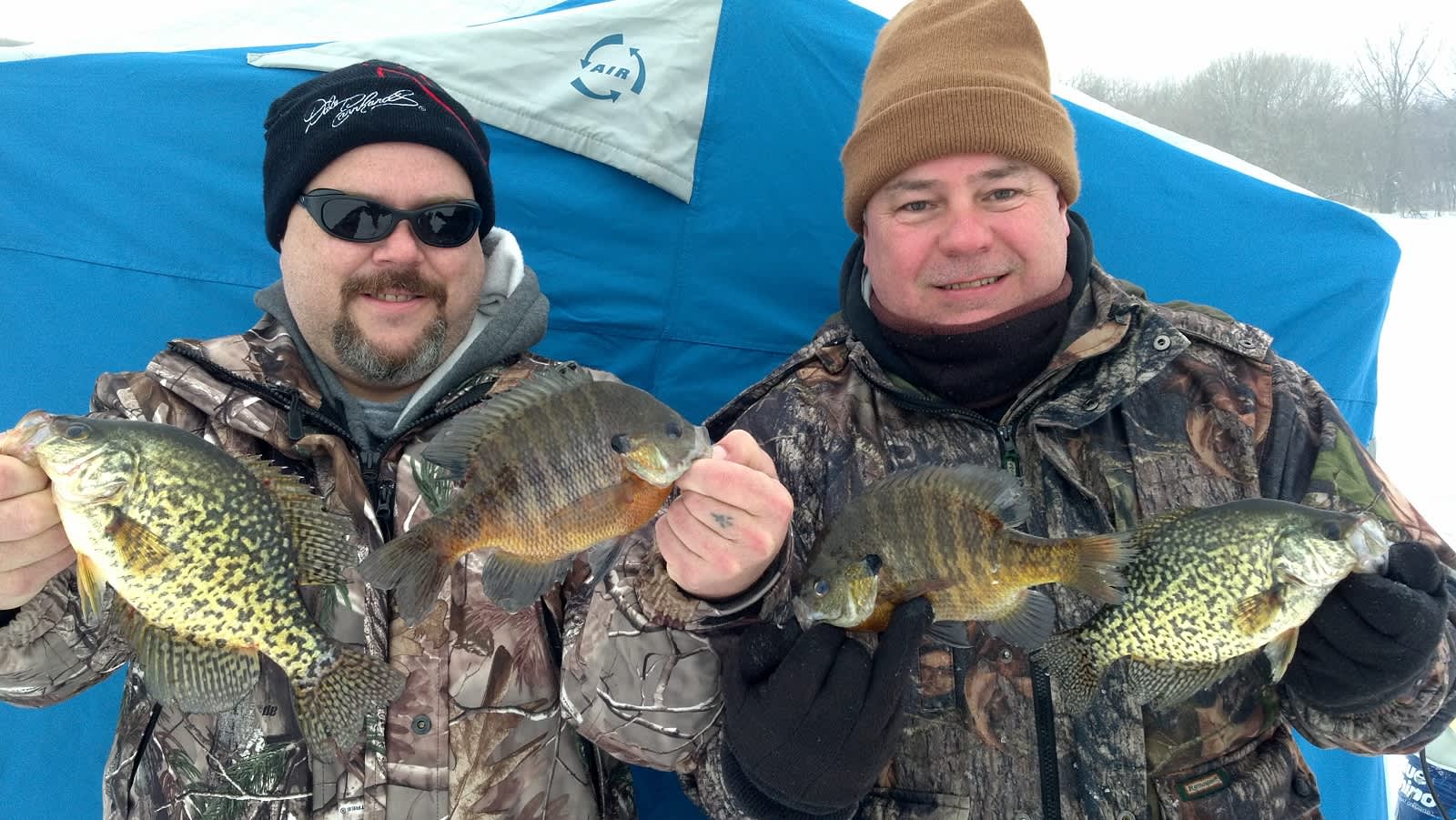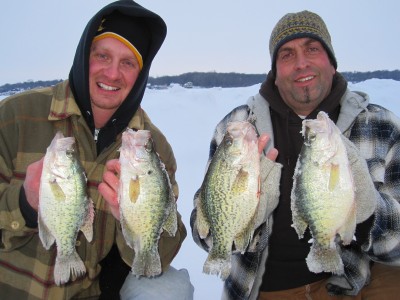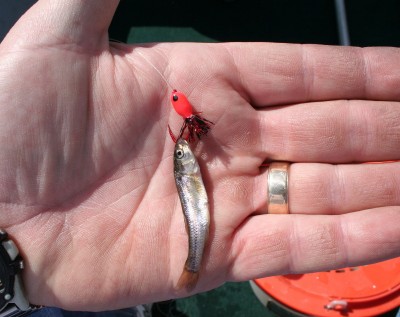Panfish on Ice
Bernie Barringer 01.21.14

No matter where you live across North America, there are peak times for every species of fish. Spawning time makes for easy pickings during the spring for many species, crappies and bluegills included. But across the northern half of the United States, there is a second peak period for crappie, perch, and bluegill fishing. January and February are anticipated by panfish anglers because these fish are in predictable locations and they are quite aggressive.
Here in north-central Minnesota, first safe ice usually happens within a week or so of Thanksgiving. In areas father south, the first safe ice fishing takes place around Christmas. The months of January through March, if you can safely get on the hard water, are prime time for panfish.
Whenever I talk ice fishing for crappies and bluegills, I think of my friend Kevan Paul, a fishing guide in northern Iowa. He’s a premiere panfish guide both on the open water and the hard water. I gave him a call and asked him to pass along some advice to the readers about those first ice crappies. He gave me a few suggestions about locating and catching these great eating fish.

“In late fall the fish will be off the deep breaklines in at least 18 feet,” he explained. “But when the lakes ice over, they start to move towards the shallows.” Kevan said they can be found is as little as three to four feet as the winter wears on, but the best early-ice locations are breaklines and bars with weeds on top in 10 to 13 feet of water, depending on water clarity. “The place to start is right in the deepest weeds you can find in the lake.”
Weeds are the key to the crappie’s location and Kevan uses an underwater viewing system to find the greenest, tallest patch of weeds he can find and then he looks for crappies located near them. “The crappies that you find near the bottom of the weed patches are not very active,” he said. “The fish you can easily catch are those that are out off the edge of the weed patches and well up off the bottom.” If he doesn’t see active crappies, he simply drills another hole and drops the camera down again. No sense targeting fish that are not likely to bite. First spend the time to find the active fish, and only then start fishing.
These crappies move along in loose schools and once you find a school of active fish, the action can be terrific. They roam from one weedy area to the next. Often lakes have weed patches that are more like clumps. Some of them may be as small as the hood on your car. If you find crappies relating to one of these weeds, you can catch them quickly because they are concentrated in a small area. If the action dies down, simply start moving from weed clump to weed clump until you find another pod of active fish. By now you can see how important an underwater viewing system is to a successful trip.
While crappies will tend to be on the edges of these weeds, bluegills will often be found feeding right in the weeds. When they are not feeding, they are still catchable, but they will often be found in loose schools off the edge of the weeds over deeper water. Look for them in the same depths as the edges of the weeds, but use your electronics to find these schools of fish 10 to 30 feet off the edges of the weed patches. They can still be caught if you get a bait in front of them even when they are not actively feeding. Perch can be in right in the thickest of the weeds at any time.

Once you find the schools of active fish, whether they’re crappies, perch, or bluegills, Kevan has some suggestions for catching them. He likes to use a slip bobber with a minnow and a bare hook for the crappies, and a waxworm or other larvae for the ‘gills. You know how deep they are because you have seen them on your depthfinder or your camera. “Keep your bait a little above the level of the fish,” Kevan explained. “Crappies feed up and you will catch a lot more fish if you position your bait right above them.”
While the simple bait and sliding float method is his go-to technique, he said some days they seem to like plastics better. When this is the case, he uses a tiny jig with a Berkley GULP! Minnow and keeps it moving slowly. Crappies move very slowly in cold water and often just come up below a bait and suck it in, then just sit there.
These bites can be so hard to detect, in fact, that every one of his panfish rods has a spring bobber on the tip to help him determine when a fish has sucked in his bait. Sometimes, he says, all you see is that the spring bobber is loaded up a little more and then you set the hook.
“It’s hard to beat pink for crappies,” Kevan shared on colors. In clear water, Kevan stays with the more natural colors such as motor oil and brown. But in the more dingy water, he might go with brighter colors such as chartreuse.
So when you venture out this winter, head out to a place where you can find deep green weeds near the open water basin of the lake. You’ll find the active panfish there and if you take your time and target these finicky speckled fish the right way, you are well on your way to a delicious fish fry.
Kevin Paul can be reached at 641-529-2359.
Follow Bernie’s bowhunting adventures on his blog, bowhuntingroad.com.

